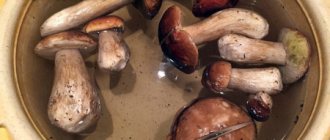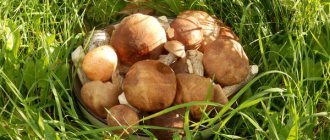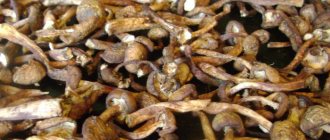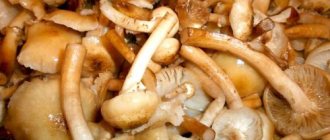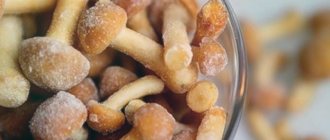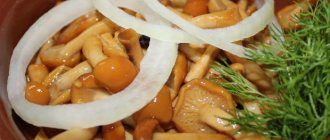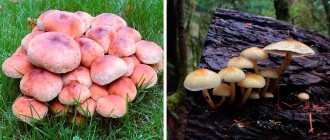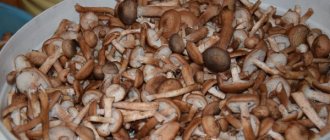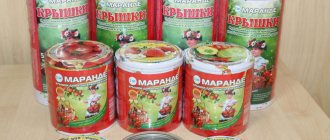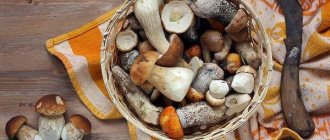In order to cook delicious mushrooms, it is important to clean them properly. Cleaning options for different cooking methods.
Any mushroom picker begins to rejoice when he notices a clearing in the forest strewn with mushrooms. Honey mushrooms are easy to prepare and make delicious pickled, salted, and fried dishes. But before preparing honey mushrooms, it is necessary to prepare them, put their appearance in order - clean, wash, so that there are no traces of leaves, grass, soil and other dirt on them, which can spoil the taste of the dish.
Why do many people have difficulty preparing honey mushrooms? This is because they are very small. You can learn about all the secrets of preparing honey mushrooms from our material.
Methods for processing honey mushrooms before cooking
It is worth saying that processing honey mushrooms does not take much time, because these fruiting bodies themselves do not grow on the ground. Therefore, very little forest debris accumulates on them, with the exception of fallen leaves and stuck grass. Honey mushrooms grow almost all year round, but the peak season for collecting them is in September and October.
In order to quickly carry out the initial processing of honey mushrooms at home before preparing and further consuming them, you should spend time cleaning them in the forest. When you collect honey mushrooms, cut them off closer to the cap, leaving a small part of the stem. It is better to put mushrooms in a basket, since in a bucket they begin to “sweat” and lose their shape. It is very important to be able to distinguish edible mushrooms from their false “brothers”: real mushrooms have a “ring-skirt” on their stem.
Processing honey mushrooms before freezing and drying
Fresh mushrooms tend to darken very quickly after cutting. Thus, immediately after harvesting, honey mushrooms are processed. If the fruiting bodies are intended for drying, then they are not washed. Honey mushrooms are sorted by size, most of the stem is cut off, and the caps are wiped with a dry kitchen sponge. Only after this the drying process begins.
In the modern world, food can be preserved for the winter by freezing. At home, this is the most popular method. This way you can keep not only berries, fruits and vegetables fresh, but also mushrooms.
Before freezing, honey mushrooms are processed in the same way as before drying. First, the mushrooms are sorted out and wormy, wrinkled and rotten ones are discarded, since such specimens cannot be cooked. Young and strong honey mushrooms with dense legs are considered ideal for freezing. When damaged by worms, only the legs are thrown away, but the cap is left: it can be used for caviar. Remove the remaining remaining grass and leaves from the caps, and wipe each mushroom with a kitchen sponge. I would like to note that before freezing honey mushrooms in their raw form, they should not be washed. If the fruiting bodies are heavily soiled, then wipe each cap with damp gauze or a kitchen towel, and then leave to dry for 1 hour. Next, the honey mushrooms are laid out in a thin layer on spreads and placed in the freezer. After they are completely frozen, they are transferred to bags or plastic containers and placed back in the freezer.
Beginning mushroom pickers often ask the question: is it possible to leave the harvest for a few hours, or do they need to immediately process the mushrooms after harvesting? Note that mushrooms are a perishable product, so it would be better to clean them immediately. However, if you don’t have time, then do the following: spread the honey mushrooms in a thin layer on newspapers in a well-ventilated area that is not exposed to direct sunlight. The mushrooms can remain in this state for 24 hours. During this time, they will dry well and it would be better to clean them dry.
Is it necessary to clean honey mushrooms before freezing?
Do you want to freeze part of your own mushroom harvest? Then you will definitely need our tips to clean honey mushrooms.
- Sort out the mushrooms.
- Throw away those that are damaged or broken.
- Cut off the base of each leg and wash under water.
- Place the mushrooms on a towel and leave for a while. They must dry completely so that a minimum of moisture remains inside the mushrooms.
- Spread the mushrooms on a flat surface in one layer and place in the freezer.
- If you want to pre-boil or fry honey mushrooms before freezing, clean them using the same method.
Processing honey mushrooms before pickling, frying and boiling
For example, if you plan to pickle mushrooms, then before processing and pickling, honey mushrooms should be briefly soaked in cold water. Soaking should be no more than 30 minutes so that the fruiting bodies do not gain a lot of liquid. And soaking for half an hour will perfectly help remove insects and their larvae from mushrooms. After this process, the “skirt” is removed from each leg of the mushroom, although each housewife decides this issue independently. Usually, many people do not try to remove the film from the stem of honey mushrooms. In their opinion, the taste characteristics of the fruiting bodies do not change, and less time is spent on processing. It is worth saying that this is the entire process of primary processing - honey mushrooms do not require thorough cleaning.
There are several ways to process honey mushrooms before preparing a dish. Here everything will depend on what kind of dish you plan to prepare. For example, before frying, mushrooms must be boiled. We can say that the processing of honey mushrooms before frying is carried out in the form of boiling. You need to boil water, add salt at the rate of 1 tbsp. l. for 1 kg of mushrooms, and introduce honey mushrooms. Boil for 20 minutes, during the process you need to constantly remove the foam from the surface. Place the finished mushrooms in a colander and rinse with cold tap water, allow the liquid to drain, and then proceed to frying.
Sometimes some housewives do not want to freeze raw honey mushrooms and resort to boiling them. Afterwards, place on a sieve, allow the liquid to drain well, and place the mushrooms on a kitchen towel to allow the mushrooms to dry completely. Only after this the freezing process begins. Honey mushrooms are processed before cooking in a similar way: they are cleaned, most of the stem is cut off, washed in water and only then boiled. The primary processing technique for honey mushrooms will depend on further processes: drying, freezing or pickling.
How to clean different types of mushrooms
There are many types of honey mushrooms, and almost everyone has some cleaning features.
If you have collected large, overgrown honey mushrooms, then how to properly clean them will depend on the method of preparation.
For drying, it will be enough to cut off the damaged areas with a knife and cut off the legs.
It is necessary to cut off the legs, because they are large and hard, and they need to be dried separately.
Caps of overgrown honey mushrooms can be easily cleaned with a dry, medium-hard toothbrush.
At the same time, if you find an insect in the plates, it is easy to remove it with the tip of a knife.
Large honey mushrooms are not washed in water, because they quickly absorb water and lose their appearance.
Autumn and winter mushrooms need to be sorted out and washed with plenty of water, unless, of course, you are going to dry them.
Winter mushrooms are covered with a layer of frozen leaves, but thawed forest debris is easily removed from the caps.
Then you need to cut off the tip of the stem and rinse the mushroom with water.
Such mushrooms are fried, pickled, salted and boiled. They are known for their antiviral properties.
Royal honey mushrooms, growing in families on stumps and fallen trees, are large in size, and their caps are covered with scales.
Delicious soups, main courses, pates and fillings for pies are prepared from this type of honey mushroom, they are pickled and salted.
To prepare them, only the caps are taken, because their legs are thick and fleshy.
They are suitable for caviar from honey mushrooms with vinegar or simply marinated separately from the caps.
You need to scrape off the scales from the caps with a knife and remove the ring skirt.
Then rinse the mushrooms in plenty of salt water to remove sand and insect larvae from the plates.
Royal honey mushrooms can only be eaten after boiling, so it is best to leave them in water for 1.5-2 hours and then boil for 30-40 minutes.
Scaly honey mushrooms undergo the same cleaning as royal honey mushrooms.
After cleaning, they are also boiled for 20-30 minutes and only fried or stewed.
Birch mushrooms are summer mushrooms that grow only on birch trees and birch stumps.
It is convenient to cut the stems of these mushrooms right in the forest, not with a knife, but with large scissors.
It is advisable to collect only young honey mushrooms, which are best suited for pickling or pickling.
At home, remove the remaining leaves and grass and soak in salt water for 10-15 minutes.
Then rinse in running water and proceed to heat treatment.
To marinate birch mushrooms, remove the skirt; it gets wet and spoils the appearance of the finished snack.
Thermal treatment of meadow mushrooms for the winter
Many lovers of “quiet hunting” like the taste of meadow mushrooms, which are found in clearings, forest edges or ravines. Such honey mushrooms grow in large groups that form so-called “witch circles.” These fruiting bodies are considered conditionally edible, but have an excellent taste. Processing of honey mushrooms before cooking is carried out according to the above rules. However, in this case, to cut the meadow honey fungus, mushroom pickers take scissors. Experts recommend consuming this type of honey mushroom along with the legs, since they contain marasmic acid and skorodonin, which cleanse the human body of viral diseases and cancer cells.
Processing of honey mushrooms for the winter is carried out as follows: cut fruiting bodies are cleaned of sand and soil, remnants of grass and leaves. Next, the meadow mushrooms are treated in large quantities of water. For example, water is poured into an appropriate container and honey mushrooms are poured out. Stir the mushrooms with your hands for a few minutes so that all the insect larvae and stuck sand come out of the caps. Remove to a colander or place on a sieve and allow the liquid to drain. Next, they begin to carry out heat treatment of honey mushrooms. Since these fruiting bodies are considered conditionally edible, they need to be boiled for about 30-35 minutes in salted water.
How to wash honey mushrooms before pickling and salting
How to wash honey mushrooms before pickling and salting? To do this, after cleaning, immerse the fruiting bodies in a deep container with warm water, leave for 20-30 minutes, then rinse them. Change the water in the container and immerse the honey mushrooms there again. After 15-20 minutes, transfer them to a sieve or colander and let the excess liquid drain. Next, feel free to proceed with heat treatment before marinating and salting recipes.
Some housewives prefer to use the cold method of pickling fruit bodies, which eliminates pre-boiling. In this case, you need to soak the honey mushrooms after cleaning for 9-15 hours, then rinse under the tap and dry. Important: for cold salting, you should also use only young and strong specimens.
We invite you to watch a video showing how to wash honey mushrooms after forest:
VIDEO
Processing of autumn mushrooms
Among mushroom pickers, autumn honey mushrooms are very popular because they have an amazing taste and aroma. How the mushrooms will be prepared in the future will determine how the autumn mushrooms will be processed. In this case, the same processes mentioned above are applied to this type of fruiting body.
It is worth noting that the processing of honey mushrooms and the processing time for each type are practically the same. The pre-cleaning time for these fruiting bodies varies from several hours to a day. If the mushroom harvest is large, then it should be divided into several parts so that processing is not so burdensome. Those honey mushrooms that you want to keep are best taken to a cool room and laid out on paper. If it is cool outside, then honey mushrooms can be placed in a well-ventilated area and left there overnight. However, experts still advise dealing with mushrooms immediately after they are brought home. This will help avoid possible poisoning from spoiled copies.
If honey mushrooms are collected from dead wood, then it is better not to pull them out, but to cut them with a stainless steel knife so that the cut does not darken. Having brought home a mushroom harvest, you will not have to remove the remains of the mycelium contaminated with dust and soil, and processing honey mushrooms will not be so difficult and time-consuming. These fruiting bodies are actually considered one of the easiest mushrooms to clean because they do not require scraping. And if you follow the advice and first clean them in the forest, then processing honey mushrooms before cooking will bring more positive emotions.
The caps of mushrooms are much more nutritious and meatier than the legs, although the legs also have their own beneficial vitamins and microelements. However, many mushroom pickers, if they find a large area occupied by honey mushrooms, collect only the caps. Then they don't have to spend a lot of time cleaning mushrooms after returning home. In addition, this method does not harm the mycelium, so next year you can safely return here to harvest a new harvest.
Many novice mushroom pickers are concerned with the question: how is honey mushrooms processed after harvesting if overgrown specimens are encountered? Let us note right away that overgrown and old specimens are always distinguished by flabby, softness and stale aroma. Therefore, it is better not to risk your health and throw away such fruiting bodies. However, if the old honey mushrooms have an attractive appearance and a good smell, you can leave them without any problems. Processing honey mushrooms in this case will largely depend on what you want to cook from them. Many people call mushroom caviar or pate the best option for old honey mushrooms.
Puree with honey mushrooms
Honey mushroom puree can be served as a separate dish or as a side dish for chicken or turkey. It is better not to eat it with meat, as this combination is difficult to digest.
7 simple recipes with honey mushrooms
Ingredients (for 4 servings):
- Potatoes (medium) – 8-10 pcs.,
- Onions (large) – 2 pcs.,
- Honey mushrooms (boiled) – 300-400 g,
- Milk – 200 ml,
- Butter – 50 g,
- Salt, pepper - to taste.
Preparation:
Peel the potatoes, cut them into halves and cook in salted water until tender. Cut the onion into small cubes, fry in 1 teaspoon of butter until golden brown, add chopped honey mushrooms, fry until semi-crispy. Crush the potatoes, season with boiled milk and butter, add mushrooms and onions to the puree, season with salt and pepper.
If you like the combination of honey mushrooms and dill, then add a bunch of chopped herbs to the finished puree.
Recipe options: if you are fasting or just want to make the dish less high in calories, milk can be replaced with potato broth, and butter with vegetable oil. In this case, salt the potatoes less than usual when cooking. This puree can be used as a filling for pies, dumplings and pancakes. If you cook it a little more steeply, you will get potato zrazy from it - form cutlets, roll them in flour and fry in butter.
Salad “Country Chic”
This salad is quick and easy to make. Its main secret is its unusual presentation.
Ingredients (for 6 servings):
- Honey mushrooms (boiled) – 400 g,
- Potatoes (boiled) – 6 pcs.,
- Onions (large) – 1 pc.,
- Pickled cucumbers (large) – 2 pcs.,
- Cheese (hard) – 200 g,
- Mayonnaise - to taste,
- Tartlets – 12 pcs.,
- Red caviar – 6 teaspoons,
- Parsley – 4-5 sprigs.
Preparation:
Finely chop the honey mushrooms and fry with onion, cut into very small cubes. Grind the boiled potatoes and cucumbers on a coarse grater, and grate the cheese on a fine grater.
Place in layers of dough tartlets: pickles, potatoes, cheese, mushrooms and onions, more cheese and potatoes. Lubricate the layers with mayonnaise. Top each tartlet with half a teaspoon of caviar and parsley leaves. You can do without caviar by decorating the tartlets with boiled egg slices or large, beautiful pickled honey mushrooms.
Honey mushroom caviar
Mushroom caviar is great for a “sandwich” breakfast and for serving on a holiday table. In addition, it can be wrapped in pancakes or lettuce leaves, added to stewed chicken and scrambled eggs, and also made into pita rolls based on it.
Ingredients:
- Honey mushrooms (boiled) – 1 kg,
- Onions (medium) – 3-4 pcs.,
- Carrots (large) – 2 pcs.,
- Vegetable oil - for frying,
- Butter (softened) – 100 g,
- Khmeli-suneli – 2 teaspoons,
- Marjoram (dry) – 1 teaspoon,
- Wheat bran, small - 2 tablespoons,
- Salt, pepper - to taste.
Preparation:
Cut the onion into half rings, chop the carrots on a coarse grater. Fry vegetables in vegetable oil. In another frying pan, fry the boiled mushrooms. Allow the products to cool slightly and pass everything through a meat grinder or grind in a blender. Add butter, spices, bran, salt and pepper to the resulting mass. Mix well. Place in a container or glass jar. Caviar is stored in the refrigerator for 4-5 days. If you are going to use it as an auxiliary ingredient, you can freeze it.
Recommendations: It is not necessary to add bran to caviar, but it improves its digestibility. The fact is that mushrooms are a rather heavy product.
Honey mushrooms: how to properly clean and wash these mushrooms?
Every mushroom picker rejoices when he sees a clearing of honey mushrooms in the forest, pretty, yellowish, small... Honey mushrooms are very convenient mushrooms to prepare, they can be pickled, salted, and fried, of course, you can cook soup from them, make mushroom pates... A whole lot of everything ! But before you cook, of course, you need to “put them in order” - be sure to clean and wash them so that there are no sticking leaves or blades of grass, soil and other dirt, which obviously will not give a pleasant taste to our dishes. Why can sometimes difficulties arise with proper cleaning of honey mushrooms? They are small in size, that's their whole secret.
How to clean honey mushrooms for pickling?
- If you will pickle honey mushrooms, then first soak them for half an hour. Do not over-soak the mushrooms in water, otherwise they will lose their own aromatic flavor.
- Remove the skirt-shaped ring from the mushrooms and cut off a large part of the base of the stem. To speed up cleaning, do not cut the skirt.
Next, do this:
- Remove rotten areas so that the product does not spoil the taste of the dish.
- Many housewives choose to dry clean honey mushrooms before using them for preparing pickled dishes. Using a kitchen sponge (it must be dry), remove all dirt that remains after collection. This method is considered more effective and more comfortable, since honey mushrooms are usually clean.
- After cleaning, you can marinate them.
Pre-cleaning of mushrooms in the forest
Before you bring the collected honey mushrooms home and begin processing and preparing them, you need to go through a preparatory stage - clean them in the forest, in the same clearing where they were collected. This, of course, increases the time for picking mushrooms, but it’s worth it - at home you won’t need to do such “dirty work” by spreading newspapers on the floor and placing buckets and basins around the house; there is much more space for this in the forest. So what should you do?
Honey mushrooms grow in large families
Carefully sort through the mushrooms, remove badly broken, old or wormy ones from the basket (if the mushroom looks neat on the outside, but it seemed suspicious to us, break the cap in half and check for worms). Using a sharp mushroom knife, which we used when cutting off the mushroom stems, we remove the remaining soil and sand from the mushrooms (usually they are on the lower part of the stems, which can be trimmed), as well as adhered leaves, dry pine needles, small twigs and other things we don’t need. garbage. We cut off parts of the mushroom stems and caps eaten by insects and be sure to throw them away (some mushroom pickers neglect this, although this is an important step).
It is necessary to remove adhering blades of grass and leaves from honey mushroom caps.
Sometimes the question arises - what to do with the wavy collar on the stem of a mushroom? It is not necessary to remove it - here you should be guided by your desires; its presence or absence does not affect the taste of ready-made pickled, boiled or fried honey mushrooms.
Under the caps of mushrooms there is a skirt - a delicate film that can be left or removed
Usually honey mushrooms grow in whole families on stumps and tree trunks, on dead wood, and only sometimes on the ground, so there is not a lot of debris and dirt on them, so preliminary cleaning of mushrooms in the forest will not take much time.
If we were talking about other mushrooms, then we would need to remove the mucous film on the cap, but honey mushrooms do not have it, so it is much easier to prepare them for home processing.
It is known that mushroom caps are much meatier and more nutritious than their stems, therefore, if forest clearings are rich in honey mushrooms, you can collect only mushroom caps, then you will not have to waste time cleaning the stems. Also, this will not harm the mycelium, and next year there will be the same number of mushrooms or even more in this place.
How to clean honey mushrooms for frying?
If honey mushrooms are compared with other types of mushrooms, then they do not require thorough cleaning, rinsing, or removing the larvae of various insects.
The most basic thing you need to do before cooking mushrooms:
- Go through them.
- Remove legs that are too long.
- Remove areas where rot is present.
- If you get honey mushrooms with legs in your hands, do not throw them away. The legs can be dried.
- How should honey mushrooms be cleaned so that they make delicious dishes? To prevent fresh mushrooms from quickly starting to darken, process them immediately.
- To start, sort out the honey mushrooms. Perhaps you missed old, bad, rotten specimens in the forest - never use such mushrooms for food.
- If only the cap on the mushroom has spoiled, then throw it away and leave the stem. The opposite may happen: the damaged stem is thrown away, but the whole cap is left behind. Also, remove any remaining debris from the caps. This can be greenery from grass or branches (do this if you couldn’t sort out the mushrooms in the forest).
- When you bring the mushrooms home, sort them thoroughly and remove all the debris present. Trim the base of the legs, all areas that are damaged. Sometimes there are insects under the caps, so check them carefully.
- Do not rinse the mushrooms if you decide to fry them. Since they can absorb water like a sponge, they will lose their shape during heat treatment. Boil (optional) honey mushrooms, so their taste properties do not decrease.
Rules for cleaning mushrooms at home
It is important to sort the mushrooms as soon as you brought them home, without putting them on the back burner, because honey mushrooms, having stopped receiving nutrition from the mycelium, darken very quickly, which does not affect their taste, but their appearance may suffer, which is especially true it is important to avoid if we want to salt or pickle them. Fresh mushrooms spoil quickly, so we have about five hours to disassemble the mushrooms and pickle, prepare for drying or marinate them.
If we cannot clean the mushrooms right away, we can immerse them in cold water with a pinch of citric acid and the same amount of salt to prevent browning.
First, we need to decide what we want to do with our honey mushrooms, because the method of their further processing depends on this.
To clean mushrooms, we may need a sharp small knife, a dry toothbrush with stiff bristles, as well as a soft brush or a piece of soft cloth.
The mushroom knife should be small and sharp
If honey mushrooms are for drying
Honey mushrooms intended for drying should not come into contact with water when cleaning (mushrooms absorb moisture very strongly, and it will no longer be possible to dry them properly - the water will not evaporate completely). In addition to preliminary cleaning of mushrooms in the forest, it is necessary to clean the mushrooms under the cap - “comb” the plates with a dry toothbrush; there may be bugs or other small insects between them - remove them with a knife. Remove the remaining sand particles from the caps using a soft cloth or brush.
If honey mushrooms are intended for drying, do not soak or rinse them
For marinating
The honey mushrooms that we want to pickle must be whole and beautiful, they need to be soaked in warm water, 40–50 minutes is enough. The main thing is that the soaking should not last more than an hour; if the mushrooms spend too much time in water, they lose their taste. After such soaking, you can remove the skirt (you don’t have to do this, but in brine the skirt usually gets wet, and this affects the appearance of the pickled mushrooms), rinse the mushrooms with cool running water, it is important to do this thoroughly, but not for long. If our honey mushrooms are very young, we soak them for 10 minutes in slightly salted water, and then rinse them either under running water or in several waters. The washed honey mushrooms need to be boiled in salted water for half an hour, and then salted and pickled.
Before marinating, you need to wash honey mushrooms especially thoroughly.
Some mushroom pickers claim that the skirt gives the pickled mushrooms a slightly sour taste and thereby spoils the taste of the mushrooms. The majority adheres to a different point of view - a skirt does not affect the taste.
For freezing
You need to freeze freshly picked mushrooms that have not been stored for several days (even in the refrigerator). Only “ideal” specimens are suitable for freezing - whole, without cut wormholes. Honey mushrooms should never be washed before freezing; they only need dry cleaning - use a sponge or soft brush to remove specks of dust, debris, stuck leaves and twigs. There is also no need to cut honey mushrooms into pieces - they are already small in size.
“Ideal” specimens are suitable for freezing
How to properly wash mushrooms
Honey mushrooms are washed after pre-treatment in a colander under cool running water. If you want to remove the skirt under the cap of honey mushrooms, use stronger pressure.
The most common method - under running water using a colander - is the fastest.
My honey mushrooms in a colander
Video: how to properly wash and clean mushrooms?
Is it possible to leave washed honey mushrooms overnight?
You should not risk your health and leave washed honey mushrooms overnight. As already mentioned, you need to cook mushrooms as soon as you pick them. However, there is another option - pour boiling water over the honey mushrooms for 10 minutes, place in a colander, rinse with water and put in the refrigerator. The mushrooms are not quite ready, and you can still cook with them - fry, boil, marinate. However, they have undergone heat treatment and will definitely not deteriorate.
Soaking
Honey mushrooms are soaked after pre-treatment in the forest and before cutting off the lower part of the legs and washing the peeled honey mushrooms with water.
Honey mushrooms are soaked in order to accurately get rid of small worms, which are not visible even when carefully examining the mushroom. How to soak honey mushrooms correctly? We adhere to the following proportion: for 1 liter of water we take 1 teaspoon of coarse salt, stir until the salt is completely dissolved and pour the solution over the mushrooms. If our suspicions were confirmed, and there really were worms in the mushrooms, they would die and float to the surface. The maximum soaking time is an hour (if the mushrooms are large, you can leave them for 2 hours). If the mushrooms are not very wormy, you can make a less steep salt solution (a quarter teaspoon per 1 liter).
Soaking honey mushrooms in salt water helps get rid of small worms
Video: how to soak and clean honey mushrooms?
In what cases is it necessary to soak honey mushrooms?
- What if we salt honey mushrooms? Be sure to soak them for about two hours in a steep saline solution.
- What if we cook honey mushrooms? You don’t have to soak them, but focus on cleaning and washing the honey mushrooms.
- What if we pickle honey mushrooms? It is not necessary to soak them, but if desired, you can reduce the time to thirty minutes. However, it is better to simply pour boiling water over them and rinse them well before doing so.
- If we fry honey mushrooms? You can soak it, or you can neglect this step.
- Should we dry or freeze honey mushrooms? Under no circumstances should they be soaked. These cooking methods do not like “wet” honey mushrooms.
How to wash honey mushrooms before frying, boiling and freezing
Fried mushrooms are a very popular dish, especially if they are honey mushrooms. When fried, they can be combined with various vegetables, and can also be prepared for the winter. How to properly wash honey mushrooms after cleaning, so that you can then fry them deliciously? For this processing process, you need to rinse the prepared mushrooms in cool water, and then dry them on a kitchen towel or leave them in a colander to drain off excess liquid. If the fruiting bodies are large, then it is better to soak them in salted water for 40-50 minutes and then rinse them under the tap.
Most methods of processing mushrooms involve pre-boiling them. In this regard, many novice housewives ask how to wash honey mushrooms before cooking? To do this, after cleaning, the mushrooms should be rinsed under the tap for several minutes and then boiled. You can also soak the fruiting bodies in salted water for half an hour and then rinse again. If you decide not to soak honey mushrooms, but to boil them immediately, then change the water at least 2 times during cooking.
If you want to freeze fresh fruiting bodies for the winter without first boiling, then the contact of mushrooms with water should be minimized. How to wash honey mushrooms before freezing fresh? First of all, remember that you need to use only whole, strong, young and undamaged specimens. After cleaning, they should be rinsed literally for a minute under running water and dipped in boiling water for 20-30 seconds. If you want to prepare boiled honey mushrooms for the winter, then wash them using the method mentioned above.

